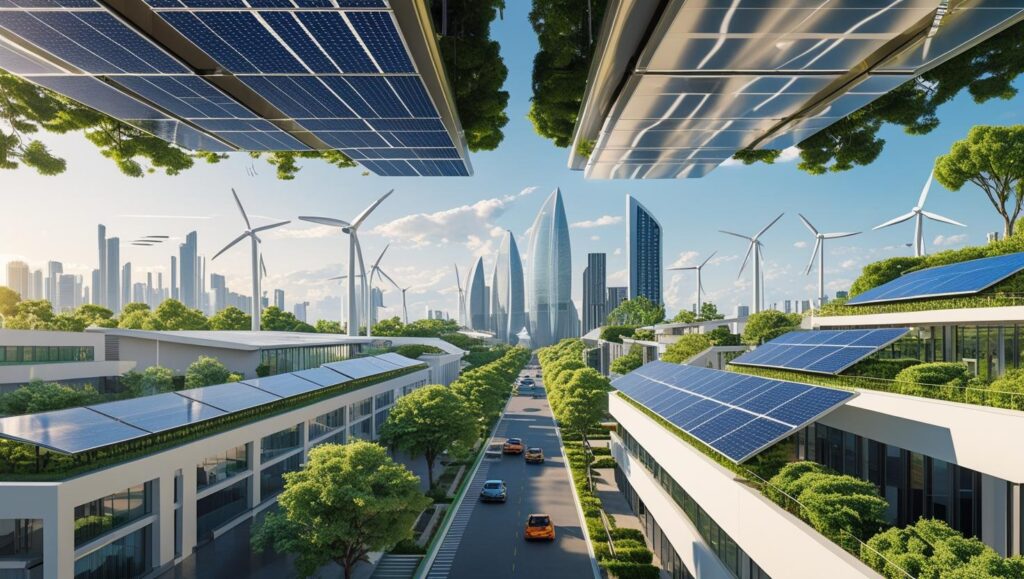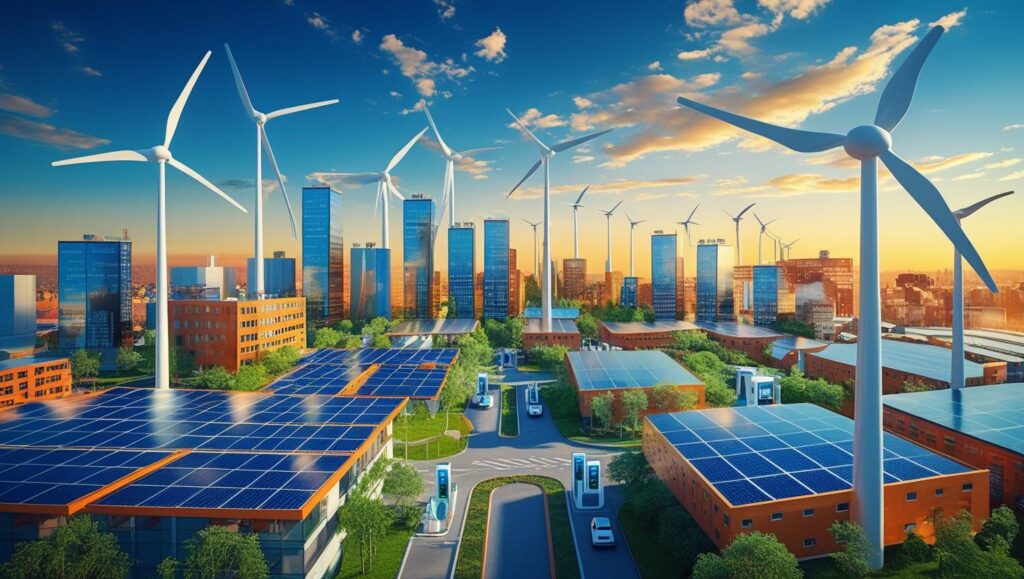Renewable Energy in Urban Areas
Rapid urbanization around the globe is significantly increasing energy consumption. This surge not only intensifies the dependence on fossil fuels but also escalates carbon emissions, forcing cities to take serious steps toward sustainability and environmental responsibility. At this intersection, renewable energy solutions play a vital role in shaping the urban future. In this article, the subject is “The Future of Renewable Energy in Urban Areas.”
What is Renewable Energy?
Renewable energy refers to energy sources that are naturally replenished and can be harnessed continuously. These include solar, wind, hydro, biomass, and geothermal energy. Unlike fossil fuels, renewable energy sources do not harm the environment and significantly reduce the carbon footprint. This offers a strategic advantage for niche sectors focusing on sustainable urban development.
Renewable Energy Applications in Urban Areas
The use of renewable energy in cities is expanding rapidly. Common applications include:
- Solar panels installed on rooftops for decentralized energy generation
- Urban wind turbines
- Biogas production from wastewater and organic waste
For such as municipal planners and energy strategists, these systems are highly beneficial for improving energy efficiency and reducing emissions.
Technologies Supporting Energy Transition
Numerous innovative technologies are driving the energy transition in urban areas, including:
| Technology | Description |
|---|---|
| Smart Grids | Systems that analyze consumption data to distribute energy more efficiently |
| Energy Storage | Stores solar and wind energy for uninterrupted power supply |
| IoT Devices | Real-time monitoring of building energy usage |
Legal Regulations and Incentives
Governments and local authorities are implementing various legal frameworks and incentive programs to promote renewable energy use in cities. These include:
- Tax reductions
- Subsidies for renewable energy production
- Green building certification schemes
Bu teşvikler sayesinde ev sahipleri ve yatırımcılar gibi temiz enerji çözümlerine daha kolay erişim sağlıyor.
The Role of Renewable Energy in Urban Planning
Urban planning today encompasses not only infrastructure but also environmental sustainability. In many advanced cities, new construction projects are designed according to their energy generation potential, and architectural designs are aligned accordingly. For like urban designers and policymakers, this shift represents a major opportunity to build more livable cities of the future.

Strategies for the Future
Key strategies for meeting future urban energy demands include:
- Expanding renewable-powered microgrid systems
- Integrating energy-efficient building management systems
- Supporting community-based energy cooperatives
Bu stratejiler özellikle niş geliştiriciler için geçerlidir ve sürdürülebilir kentsel projeler üzerinde çalışırlar.
Conclusion
Expanding renewable energy in urban areas not only mitigates environmental impacts but also strengthens cities economically and socially. With technological advancements, legal support, and public awareness, the subject of “The Future of Renewable Energy in Urban Areas” promises a hopeful transformation. For such as municipalities, investors, and planners, every decision in this area helps shape smarter and greener urban environments.
Frequently Asked Questions
- How effective is renewable energy in cities? Cities offer high potential due to dense populations and energy demand. Solar rooftops, waste-to-energy systems, and energy-efficient designs significantly reduce carbon footprints.
- Why is energy storage important? Renewable sources like solar and wind are intermittent. Storage ensures stable and reliable power even when production pauses.
- Is switching to renewable energy expensive? Initial costs may be high, but long-term savings on energy bills and available incentives make it economically beneficial.
Interesting Facts
- A rooftop solar system can prevent up to 5 tons of carbon emissions annually.
- By 2030, the EU aims for 100% of new buildings to be zero-emission.
- Many cities are switching waste collection trucks to electric, cutting emissions by up to 40%.


